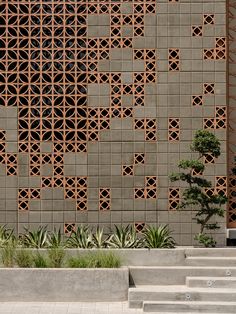Innovative GRC and GFRP Solutions for Modern Building Front Elevations


Understanding GRC and GFRP
Glass Reinforced Concrete (GRC) is a composite material consisting of a mixture of cement, fine aggregates, water, chemical admixtures, and glass fibers. GRC offers the appearance and feel of concrete while being significantly lighter and stronger. The inclusion of glass fibers enhances the tensile strength of the concrete, making it suitable for creating intricate designs and lightweight panels.
Glass Fiber Reinforced Polymer (GFRP), on the other hand, is a composite made from glass fibers embedded in a polymer matrix. The result is a highly durable, lightweight material that can be molded into virtually any shape or form. GFRP is known for its excellent resistance to corrosion, low maintenance requirements, and high strength-to-weight ratio, making it ideal for both structural and non-structural applications.
Advantages of GRC and GFRP in Building Front Elevations
1. Design Flexibility: Both GRC and GFRP offer unparalleled design flexibility. They can be molded into complex shapes, patterns, and textures, allowing architects to bring innovative and creative design ideas to life. From traditional designs mimicking stone or wood to modern, sleek facades, the possibilities are endless.
2. Lightweight: One of the most significant advantages of GRC and GFRP is their lightweight nature. This property reduces the load on building structures, which can result in cost savings on foundations and structural supports. It also makes these materials easier and quicker to install compared to traditional materials like stone or precast concrete.
3. Durability and Low Maintenance: GRC and GFRP are highly durable materials that can withstand harsh weather conditions, UV exposure, and pollution. GFRP, in particular, is resistant to corrosion, making it ideal for coastal areas and industrial environments. Both materials require minimal maintenance, translating into long-term cost savings.
4. Sustainability: GRC is considered a sustainable material because it uses less cement compared to traditional concrete. The manufacturing process of GRC also has a lower carbon footprint. Meanwhile, GFRP’s longevity and resistance to environmental degradation contribute to sustainable building practices by reducing the need for frequent repairs and replacements.
5. Thermal and Acoustic Insulation: GRC panels provide excellent thermal insulation, helping to regulate indoor temperatures and reduce energy consumption for heating and cooling. Additionally, both GRC and GFRP can offer acoustic insulation, enhancing the comfort of building occupants by reducing noise from the external environment.
Applications of GRC and GFRP in Building Elevations
- Cladding and Facade Panels: GRC and GFRP are widely used in cladding and facade panels, providing an aesthetically pleasing exterior that protects the building from the elements. The panels can be designed to mimic a variety of materials, from natural stone to smooth, contemporary finishes.
- Architectural Elements: From cornices and columns to balustrades and window surrounds, GRC and GFRP allow for the creation of detailed architectural elements that enhance the character of a building. Their ability to replicate traditional designs makes them ideal for restoring historical buildings or adding decorative features to new constructions.
- Canopies and Roof Features: GFRP is particularly well-suited for creating lightweight canopies and roof features that add visual interest to a building’s elevation. The material’s flexibility allows for the design of unique, eye-catching shapes that would be challenging to achieve with conventional materials.
- Sunscreens and Louvers: GRC and GFRP sunscreens and louvers are popular for their functional and aesthetic benefits. They provide shading, reduce glare, and enhance energy efficiency while adding a distinctive look to the building facade.
Conclusion
The use of GRC and GFRP in building front elevations is a testament to the evolution of construction materials towards more innovative, sustainable, and versatile solutions. These materials not only enhance the visual appeal of buildings but also contribute to their durability, energy efficiency, and overall performance. As the demand for modern and sustainable architecture continues to grow, GRC and GFRP are set to play a pivotal role in shaping the future of building design.
Whether you are an architect looking to push the boundaries of design or a builder seeking durable and cost-effective materials, GRC and GFRP offer a wealth of possibilities that meet the demands of contemporary construction while contributing to a sustainable built environment.
